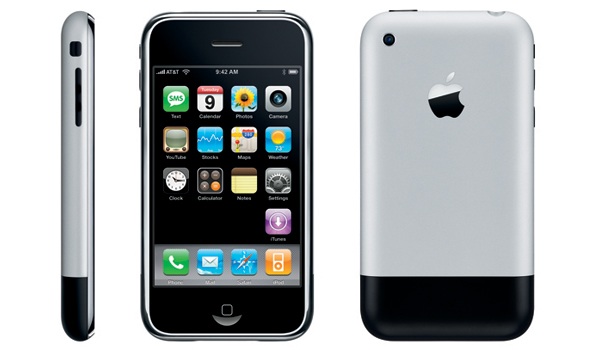
The first generation iPhone was released on June 29, 2007; the most recent iPhone model is the iPhone SE, which was unveiled at a special event on March 21, 2016.
The user interface is built around the device's multi-touch screen, including a virtual keyboard. The iPhone has Wi-Fi and can connect to cellular networks. An iPhone can shoot video, take photos, play music, send and receive email, browse the web, send and receive text messages, follow GPS navigation, record notes, perform mathematical calculations, and receive visual voicemail.Other functions—video games, reference works, social networking, etc.—can be enabled by downloading application programs (‘apps’); as of October 2013,
There are nine generations of iPhone models, each accompanied by one of the nine major releases of iOS. The original 1st-generation iPhone was a GSM phone and established design precedents, such as a button placement that has persisted throughout all releases and a screen size maintained for the next four iterations.
The iPhone 4 featured a higher-resolution 960×640 "Retina Display", a VGA front-facing camera for video calling and other apps, and a 5-megapixel rear-facing camera with 720p video capture.
The iPhone 5C features the same A6 chip as the iPhone 5, along with a new backside-illuminated FaceTime camera and a new casing made of polycarbonate. The iPhone 5S features the dual-core 64-bit A7 processor, an updated camera with a larger aperture and dual-LED flash, and the Touch ID fingerprint scanner, integrated into the home button, and fitness tracking facilities. The iPhone 6 and iPhone 6 Plus further increased screen size, measuring at 4.7 inches and 5.5 inches, respectively. In addition, they also feature a new A8 chip and M8 motion coprocessor. As of 2013, the iPhone 3GS had the longest production run, 1,181 days; followed by the iPhone 4, produced for 1,174 days.
The original iPhone was one of the first phones to use a design featuring a slate format with a touchscreen interface.Almost all modern smartphones have replicated this style of design.
No comments:
Post a Comment